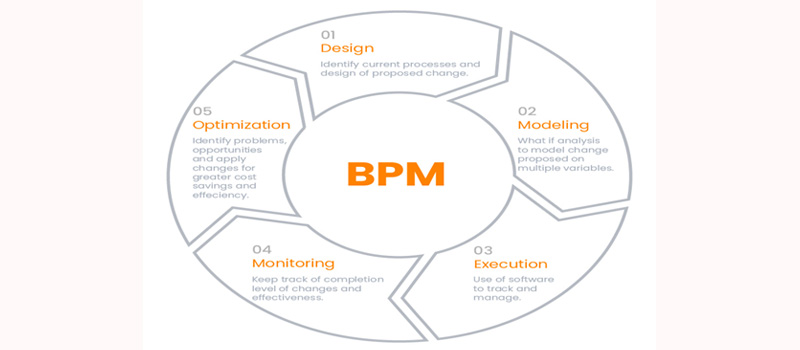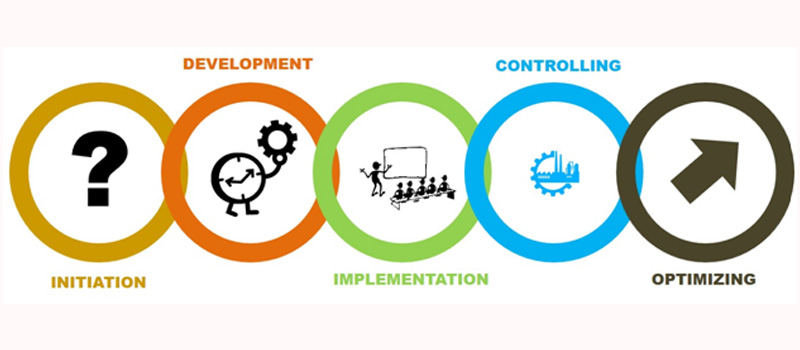Business Process Management – Identify, Implement and Automate

Business Process Management – Identify, Implement and Automate
Are you keen on managing your business processes? With so many great benefits attached to it, it wouldn’t be surprising if every business wants to get into the BPM.
Before doing so, these are the important steps that you should be aware of to make the most out of this process:
1. Identify the bottlenecks - Go through processes and identify the one that delays delivery or causes chaos in your company. Taking a stroll through your office and talking to the employees will immediately give a good idea of how difficult or chaotic some of the processes are. When you look deeper, it will be easier to identify that many of them have time-consuming processes or obstacles. People’s inefficiency and lack of digital access can also cause this situation.
2 . Understand How Different Companies Handle it - Instead of immediately implementing a process, find how companies handle the same issue. Studying the industry and knowing how other companies, including your competitors handle the situation gives you a perspective of how others solve similar problems. It can help you learn valuable lessons and avoid the pitfalls when defining the business process flow. The use case scenario will identify practical difficulties before automating certain aspects of the process.

3. Find the Process that Needs Automation Immediately - Focus on what you need the most than the processes that you desire to be automated. Instead of simply focusing on the customer front, consider automating processes within your company that will impact handling deadlines and overall process quality. A common mistake that most decision-makers will do is trying to automate multiple processes at once. Focus on where the most crucial pain points are and implement the business process step by step rather than trying to do them all at once.
4. Setup a Game Plan for this New Process Automation Implementation - Create a strategy to ensure the implementation is seamless and done through steps. Understand how completely changing the way your company operates will impact your organization, your teams, and the morale of your employees. If it creates more chaos than streamlining, the entire purpose of implementing something new becomes void. Empower your marketing, financial, IT, and other teams to help employees throughout this digital process automation so that the transition is seamlessly handled, one step at a time.
5. Handle Process Change and Measure its ROI - Everything from training and implementation up until ROI should be measured in the final. Implementing, innovating, and automating is not where it ends. As the leader or decision-maker in this entire process, you should help the employees get trained, understand, and handle process change. When it is handled with professional perfection, they will be inclined to adopt change better in the future. Create an ROI measurement chart to ensure it inspires the top management to invest more in digital transformation as the world moves towards AI and cloud-based Data management as a next big thing.

Summary
A powerful business process management software can help you to automate from one end to another while having total control over all the confidential data being handled. Some organizations are skeptical about allowing their documents to be uploaded to the cloud due to data security concerns but that fear is is unfounded as the cloud servers such as AWS and Azure have rock-solid security and our offered BPM is absolutely compatible for these cloud providers and can handle its security with assurance. Business Process Management is the need of the hour and our software will help you to achieve your targets and improve productivity every step of the way.
How will COVID-19 alter the BPO/BPM Industry?
A practitioner’s perspective on the impact COVID-19 will have on the shared services / business process outsourcing industry.
It is still early days to judge the efficacy of the response to the COVID crisis. Service Providers, their clients, and companies with in-house shared services centers performing business process work around the globe, have leveraged a range of strategies to keep their businesses afloat, while putting employee safety at the center of their efforts. There is little doubt that we will emerge out of this crisis quite differently from the way we went into it.

We’ll examine three areas in this context:
Localized BCP to Distributed Workforce
Multifunctional versus siloed functional centers/shared services
Accelerated standardization and platform services
Localized BCP to distributed workforce
It’s not really BCP, or business continuity planning, as we understand it. Ask any client or provider and they will tell you that prior to the crisis, BCP typically referred to a specific location, center, or city, which becomes unavailable to process work, and the actions taken to compensate for it. Typical solutions ranged from having an alternate location in the same city to flying people to other locations; or if work was done across two reasonably distant locations, the lights on workload could be shifted to the unimpacted location.
The COVID crisis has turned the localization assumption on its head. What do you do when your centers in Poland, Philippines, UK, and even in the US, take a hit all at once due to a crisis? The obvious and swift response to move work infrastructure, such as laptops and desktops, to the employees’ homes, has meant that this isn’t lights on critical work BCP, it is a distributed workforce.

But managing a distributed workforce has its limitations
The areas of concerns have been both sector specific and cross industry. The initial concerns across industries were around security of data and potential impact on productivity, either due to infrastructure quality or due to the lack of supervision, especially for novice associates. Solutions have been quickly deployed whether it’s about upgrading the home internet of the associates working from home, or deploying technology to ensure supervisors constantly stay in touch. Collaboration tools like Cisco’s Webex, Google’s Hangout, Zoom and Skype, have proved to be great enablers and served to assuage some of these concerns.
There will be some industry-specific challenges, such as the inability to record customer calls remotely in a WFH environment, or potential PII data exposure, which necessitates additional controls due to the sensitivity of information.
Why is this shift important?
Assuming this grand experiment proves to be a success, companies will question the need to go back to the old model. The most basic change - the cost differential between desktops and laptops - will be easily justifiable as essential to business. More importantly, transitioning work, which historically involved some amount of travel and initial weeks of in-person interactions, will also be questioned. Transition and Training will shift to leveraging software collaboration platforms and learning experience platforms like Wingspan, ensuring anytime, anywhere, and at-your-convenience learning.
Multifunctional versus siloed functional centers/shared services:
Single locations with a significant chunk of work for a specific function serving global customers constitute a higher degree of risk, and companies will look to de-risk operations. This necessitates multiple service lines at a given location, and to the extent it’s viable, looking at more than one low-cost location with exposure to critical work packages. While a concurrent global crisis may make multiple locations look inconsequential, the varying degree of the crisis does make a difference. When initially the China centers were hit, other global locations picked up the slack. Now, however, the China delivery centers for most are operational, with some even working with a reasonable mix of office and WFH.
Why is this shift important?
The crisis will filter out those with the ability to shift work rapidly, and at scale, as the key players and strong partners. While it is still anecdotal at this stage, a few smaller shared services centers have struggled to adapt. Companies must question themselves on what constitutes core vs. context; especially when they look at deploying internal shared services, they can reduce their risk, either with the multi-functional/multi-locational approach, or by splitting work between internal resources and external providers.

Accelerated standardization and platform services:
The adoption of standard platforms and work for cross industry processes has been rather tepid, with multiple reasons ranging from the limitations of company-specific systems to process nuances. New age companies have lesser limitations, but most Fortune 500 companies have existed long before the internet. Imagine a multi-tenant, cloud-based platform, where 70% - 80% of the work is fungible, while the truly company-specific nuances account only for the balance 20%. In such a scenario, cross trained resources can be deployed quickly. Combine with it the points on training and location discussed above, the ability to respond would increase exponentially.
Why is this shift important?
The shift to platforms brings several advantages – less manual work and more automated ways of working, which in turn drives efficiencies and effectiveness. BPM providers are now increasingly dealing with more complex projects and the onus, hereon, will be on service providers to deliver business value.
Newsletter
Subscribe to Our Newsletter to get Important News, Keep up on our always evolving product features & technology.

